The Incident (1967)
Directed by: Larry Peerce
Written by: Nicholas E. Baehr
Starring: Beau Bridges, Brock Peters, Martin Sheen, Tony Musante
USA
AVAILABLE ON DUAL FORMAT BLU-RAY AND DVD from EUREKA ENTERTAINMENT
RUNNING TIME: 100 mins
REVIEWED BY: Dr Lenera, Official HCF Critic
On a late Sunday evening in the Bronx, punks Joe Ferrone and Artie Connors are looking for trouble. After giving a hard time to a pool hall owner for closing early, they briefly harass a passing couple, then mug an old man for his eight dollars and beat him into unconsciousness. The night is still young though and the duo want something else to do. Nearing a railway station, they decide to board a late night train. In the carriage they get on are a number of passengers…
As a rabid film nut, there are always films that you hope you’ll get round to seeing them some day, and then there are also films you watch and say to yourself “why have I not heard of this before”? Granted, The Incident seems to have passed into near obscurity since it hit cinemas in 1967, but I like to think [dream on Doc] that I’m pretty good with “under the radar” stuff. In any case, The Incident might well be the most frightening film I’ve seen in a while. It’s not classified as a horror film, but It most certainly contains horror, though it’s horror of the most realistic kind, the terror coming from human fear that you can almost smell, it’s so vivid. It was made at a time where New York City was so rife with crime that a pamphlet [replicated in the booklet accompanying this Blu-ray release] was handed out to new arrivals by the police. People were encouraged to stay out of trouble and to not get involved. Larry Peerse’s film seems to be a passionate response to this dreadful state of affairs and an attack on it, a full-on criticism of all those bystanders who just won’t do anything. And, while I’m sure that New York City isn’t anywhere near as dangerous at night now, the powerful message of the film is still pertinent today. What adds some complexity is that the viewer is asked what he or she would do, and is even implicated because I’m sure that not all of us would try to do anything, there’s certainly a case for not getting involved. But ignoring its important and still timely message which I’m sure has caused much debate or soul searching after people have seen it, it’s also a terrifically lean, mean thriller, virtually cinema verite in style. The actual film making is often a little rough, but in a way it adds to the realism. At times it feels like you’re watching something not far off from a modern ‘found footage’ movie, though don’t worry there’s no shaky camera that prevents you from seeing everything that’s going on properly! It is though quite harrowing, even of what little violence exists is handled with discretion.
I hadn’t heard of its director either, but a quick look on IMDB revealed that I have seen two of his other movies ages ago, the intelligent romance Goodbye Columbus and the poignant tearjerker The Other Side Of The Mountain. He made a name for himself in 1964 with One Potato, Two Potato, about interracial marriage. Unlike that film, he intended to make The Incident in colour, but tests convinced him that black and white would be more appropriate. It was adapted from a teleplay entitled Ride With Terror by the same writer, Nicholas E. Baehr. Because they liked to pretend that stuff like this never happened on their trains, The New York Transit Authority denied permission for the filmmakers to shoot even background shots on its property. Peerce decided that the shots should be taken anyway, and cinematographer Gerald Hirschfeld and an assistant went around the underground with a camera hidden in a bag. When its whirring sound attracted police, the two stopped, went away, and came back later to finish the job. Outdoor scenes were filmed in an area of the Bronx which was closed and torn down six years later, while the train interiors were filmed in a studio mock-up based on original blueprints of the carriages. Lights were mounted along the exterior and illuminated sequentially to simulate a speed of 30 mph. Despite its very low budget, money ran out after one week of shooting was finished and 20th Century Fox’s Richard Zanuck [son if head Daryl] came to the rescue. Limited distribution hampered its box office chances and reviews were mixed. In the UK, it was twice rejected for exhibition by the BBFC.
We’re introduced to Joe Ferrone and Artie Connors right away, and immediately we don’t like them. It was probably quite brave [well, the whole film was brave] to spend the first 20 minutes or so with our two bad guys and not attempt at all to make them sympathetic. I reckon that, if this film were made today, we’d learn more about their background and at least be given some hints as to why they are they way they are, but the only time they’re kind of humanised [if you could call it that] is when they discuss whether “bitches” are preferable to “broads”. They’re just nasty pieces of work, and Martin Sheen and Tony Musante, the latter reprising his role from the teleplay, are so convincing it’s almost worrying, a darkly amusing double act with their repartee and the way Joe tends to be the more aggressive one while Artie keeps more to the background, often just cackling at Joe’s antics. Sheen, who màde his feature film debut here, is of course the best known out of the two stars, but let’s hear it for the undervalued Musante [probably best known for The Bird With The Crystal Plumage], who seemed to be on the verge of movie stardom in the late ‘60s/early ‘70s but then focused more on TV. Apart from the Dario Argento film, I think the only other movie I’ve seen him in is The Grissom Gang where he plays another convincing nasty. Here, he’s terrifying, but also seems very real, and a kind of forerunner to David Hess’s Krug in Last House On The Left. The bored Joe and Artie decide to find a “bitch” [which probably means rape], but instead they rob an old man, then get angry with him for not having much money. Joe waves his knife around, but decides to just bludgeon the poor guy with the handle instead. No, we don’t really see the act properly – this is 1967 after all – but somehow not showing the impact enhances the horrible feeling we get of this being something that Joe does often, and is therefore not at all a big deal to him.
The film now devotes the next half an hour to introducing all the other characters who are destined to find themselves in the same train carriage as Joe and Artie and a sleeping derelict. First to board the train are Bill Wilks, his wife Helen, and their sleeping 5-year old daughter. Bill is unhappy because Helen spends too much money and they’ve just spent yet another evening at her parents’ house. Now, he refuses to take a cab home. They’re followed by some others. There’s teenage virgin Alice Keenan, and her sexually aggressive date Tony Goya, who makes her feel bad for not “putting out”. Elderly Jewish couple Bertha and Sam Beckerman who’s angry at his children not helping him out financially. Two soldiers Phillip Carmatti and the broken-armed Felix Teflinger. Middle-aged Muriel Purvis and her mousey husband, Harry whom she resents for earning less money than many of their friends and having no ambition [and being impotent?]. Out-of-work, recovering alcoholic Douglas McCann. Homosexual Kenneth Otis. And African-American couple Arnold Robinson and his wife Joan. Arnold hates all white people and is in favour of violent action, while Joan prefers the diplomatic approach. Yep, this film gets right in there, it’s not subtle, and is Kenneth trying to pick up Douglas in the bar where we first see them? It sure seems that way. Most of these folk have problems with either themselves or their other halves, while the men are mostly if not entirely the problematic ones with the women are trying to reign them in and maintain some balance. It soon occurred to me that, along with the two crooks, we’re basically being presented with a microcosm of America circa 1967, the characters all representing something, a particular social problem or point of view. Some viewers may find this a bit too contrived, but I was impressed by how much stuff Peerce and Baehr were putting into their cheap little suspenser without making it lose its feeling of authenticity.
The same can be said for its downbeat view of human nature which I’m sure not everyone will agree with, but Peese and Baehr were clearly worried at the way things were going and were attempting nothing less than a wake up call – and you have to admire their passion. Joe and Artie soon get on the train and, locating the weakness of each person, proceed to torment everyone, beginning with the tramp whose feet they light a match to, then Kenneth. Sometimes objections are voiced, and are then of course dealt with, but for most of the time the others just sit there and watch. It seemed to me that their abusers could be overcome if everybody or most of them came at them all at the same time, but some of these people are more bothered about their own problems – while Arnold is just enjoying the sight of whites terrorising other whites. He even tells Joe that he’s on their side and is willing to help them. I’m not sure that a modern film would be daring enough to have such a scene. Unfortunately the potentially most powerful moment involving Arnold is weakened by the overacting by Brock Peters, and I’m not sure that he would have backed down from not striking the blow he was going to, while a row between one of the couples when the woman seems to hate her husband so much she prefers Joe rings a little false. But for the most part the edge is maintained and some scenes are very uncomfortable to watch even if nothing really horrible in shown on screen – though you know that things will erupt eventually. However, when it does, there’s no sense of elation. And most films would have at least some of the characters change for the better or at least become friends, but that doesn’t happen here. One gets the unpleasant thought that, not only are their various problems unresolved, but they’ll continue to not get involved in things that could be really bad and happening right in front of their eyes. Yes, it’s a very negative view, but would you try and do something in a similar situation? I like to think I would, and I also like to think that others present would follow my lead, but I reckon that very few people know exactly what they would do in a certain circumstance.
Dialogue is sometimes forced, especially during the introductions of some of the characters, but performances are generally fine. Beau Bridges has some of the stronger moments, doing a lot of acting with just his face. The look of the film is another matter: it can’t help but appear really cheap, and the usage of different level angles tends to feel random rather than part of an overall design by cinematographer Gerald Hirsch, though neither of these things really hamper the piece which may have lost some of its effect if it had been filmed in a smoother fashion, and every now and again you get a neat piece of staging, like the second scene between Harry and Muriel where all we see of Muriel are her legs as she paces up and down in the foreground while Harry is sitting on a bench in the back ground, and the continual cuts to or pans down the faces of the witnesses is also effective, the camera silently judging them. Even when Joe and Artie spin around, we adopt their point of view so we focus on those observing. We never feel that we’re not inside a train carriage either. I’m not sure that we needed the few instances of musical score by Charles Fox and Terry Knight even though the opening track [pun not intended] is good musical backing for the images of trains behind the opening titles and features an early use of a moog synthesiser. Thinking about it, it’s easy to see why not many people went to see it on 1967 , but I feel that The Incident is a film of some importance, and I hope that Eureka’s decision to bring it out gets a lot more people to see it. And after you’ve watched it, two particular things may come to mind. The first is that, if Joe hadn’t turned his attention to the particular person that he did near the end, the drama may well have had a non-ending. The second is that today, people probably wouldn’t be much different, except instead of just observing, they’re probably more likely to pull out their mobile phones and start recording the whole thing.
Previously out on Region A Blu-ray from Twilight Time, Eureka have probably done their usual touch-up work on the master for their own disc. The majority of the film looks fine, sharp but without losing its gritty visual aesthetic. Blacks almost entirely lack crush too. However, there are few instances of zooms, like one early on towards a tower block, which look a bit hazy, though considering the quality of the rest of the restoration, there probably wasn’t anything that could have been done. The audio comes through with perfect balance.
As usual Eureka have improved on the earlier release regarding special features. While it’s not officially listed, they’ve ported over the music and effects track [not something they always do or are always able to do], plus the director’s audio commentary with Nick Redman. The latter sadly passed away recently, and I know that I won’t be the only person who will miss his voice, the way his sober manner barely conceals a huge love of cinema, on future releases. This track is a very good one, with Peerce gracefully answering all of Redman’s questions and never being short of stories to tell about the production, from a crew member using the toilet set because it was so realistic, to the only way to get Ed McMahon [Bill] not to speak the lines that Peerce didn’t want him to say from the script being to tell Diana Van der Vlis, playing his wife Helen, to put one of her hands in front of his mouth as they filmed – and it works for the scene. Apparently, out of the two composers, Terry Knight didn’t compose a thing but was credited due to an unused song he wrote to be intended for the end credits. Peerce recalls the making of this film with great fondness, and it generally seems that, if tempers flared [which they did a lot], it was because everyone was so passionate about it.
Eureka have added a second audio commentary. Alexandra Helen-Nicholas’s contribution is far more from an academic point of view, but that’s fine – there’s so much interesting content in this movie, and Helen-Nicholas never gets too dry. She examines the characters, places the two villains within the age-old archetype of the god-like trickster figure, and keeps biographies nice and potted. There are rather a lot of gaps, but it’s full of perceptive observations and is a nice alternative to the other track. And then we have a Q and A with Peerce from 2017. Despite good questions being asked by the audience, much of us what he says is on the audio commentary, though he goes into more detail about certain things, and we do hear about, for example, how Gary Merrill, playing Douglas McCann the alcoholic, had a drinking problem himself, while it’s somewhat scary to hear how Musante got himself into character and on one evening had to be calmed down by Peerce before he felt he could let him go.
The Incident is raw, upsetting and vital. Eureka’s Dual Format release includes some complimentary special features and comes Highly Recommended.
SPECIAL FEATURES
*1080p high-definition digital transfer, available for the first time ever on Blu-ray
*Uncompressed monaural soundtrack (on Blu-ray)
*Optional English subtitles for the deaf and hard-of-hearing
*Audio Commentary with Director Larry Peerce and Film Historian Nick Redman
*Brand new and exclusive audio commentary by film critic and writer Alexandra Heller-Nicholas
*Isolated music and effects track
*Post-screening Q&A with director Larry Peerce, filmed at the 2017 Wisconsin Film Festival [30 mins]
*Original Theatrical Trailer
*Limited Edition Collector’s booklet featuring new writing by film writer Samm Deighan; critic and journalist Barry Forshaw; Welcome to Fear City: A Survival Guide for Visitors to the City of New York – a reprint of the notorious pamphlet distributed at the height of New York’s crime epidemic [First Print Run Only]

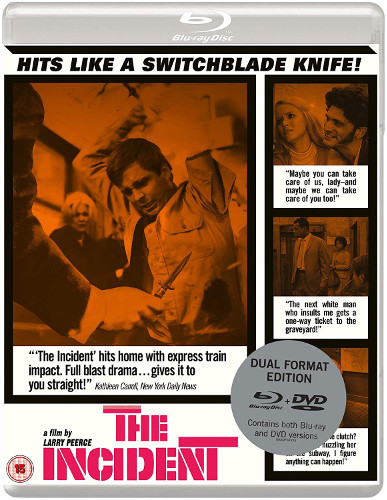
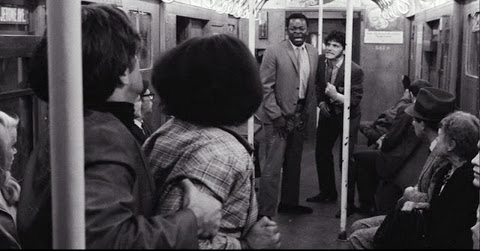
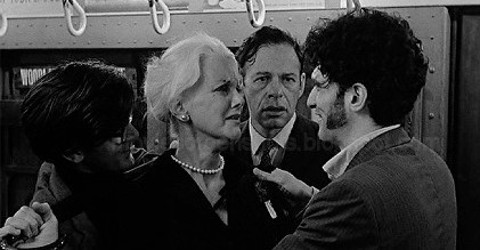




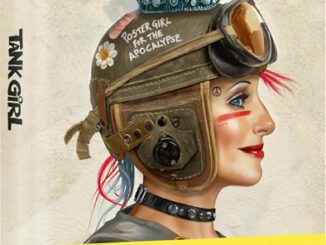
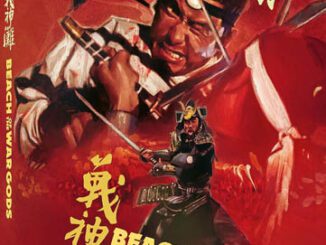
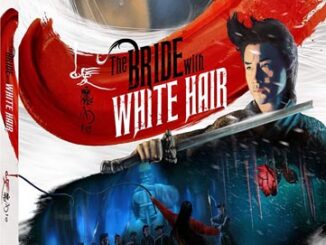
Be the first to comment